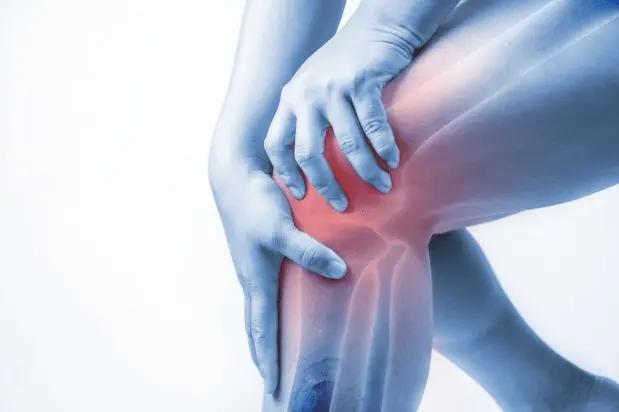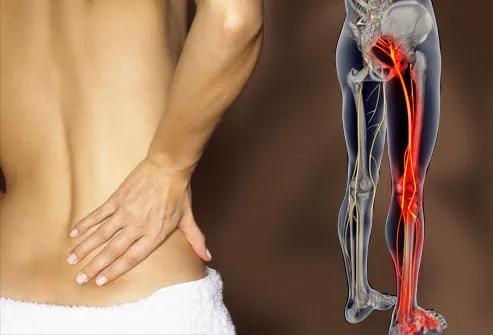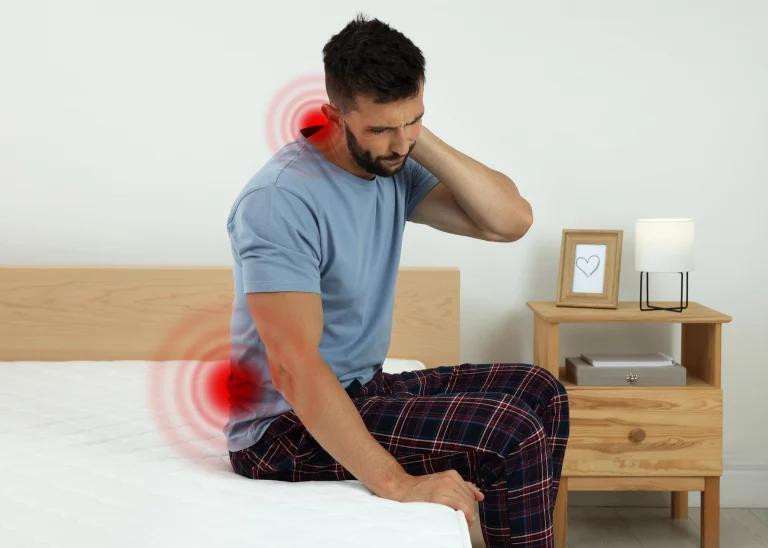Experiencing persistent or intense pain in the legs can be a debilitating and concerning issue. Whether it’s a sharp, shooting sensation or a dull, aching discomfort, leg bone pain can significantly impact your quality of life and daily activities. Fortunately, with the right understanding and approach, you can find effective ways to alleviate this discomfort and take proactive steps to prevent future episodes.
In this comprehensive guide, we’ll delve into the common causes of leg bone pain, explore various treatment options, and provide valuable insights on how to manage and prevent this condition. Drawing from the expertise of healthcare professionals and the latest research, we’ll equip you with the knowledge and strategies to regain control over your leg health and find lasting relief.
Understanding leg bone pain
Leg bone pain can manifest in various forms, ranging from mild discomfort to debilitating agony. It can be localized to a specific area or radiate throughout the leg, and the intensity can fluctuate depending on the underlying cause. Recognizing the distinct characteristics of leg bone pain is crucial for accurate diagnosis and effective management.
Defining leg bone pain
Leg bone pain, also known as osseous pain, refers to any discomfort or discomfort felt within the bones of the leg. This type of pain is often described as a deep, aching sensation that originates from the internal structures of the leg, including the bones, joints, and surrounding tissues. In contrast to muscle pain or joint pain, leg bone pain is typically more intense and localized to a specific area.
Causes of bone pain
Numerous factors can contribute to the development of leg bone pain, and understanding the underlying causes is essential for proper treatment. Some of the most common causes include:
- Traumatic Injuries: Accidents, falls, or sports-related incidents can result in bone fractures, stress fractures, or other forms of trauma, leading to acute and severe leg bone pain
- Degenerative Conditions: Conditions like osteoporosis, osteoarthritis, and Paget’s disease can weaken the bones, making them more susceptible to pain and discomfort
- Inflammatory Disorders: Certain inflammatory conditions, such as rheumatoid arthritis or osteomyelitis (bone infection), can cause inflammation and pain in the leg bones
- Malignant Conditions: Bone cancer, either primary or metastatic (spread from other parts of the body), can result in persistent and often debilitating leg bone pain
- Overuse Injuries: Repetitive stress on the leg bones, as seen in athletes or individuals engaging in high-impact activities, can lead to the development of conditions like shin splints or stress fractures
- Circulatory Disorders: Impaired blood flow to the leg, as seen in peripheral artery disease or deep vein thrombosis, can contribute to leg bone pain
Understanding the underlying cause of your leg bone pain is crucial for receiving the appropriate treatment and achieving lasting relief.
Symptoms of leg bone pain
The symptoms associated with leg bone pain can vary depending on the underlying cause, but some common symptoms include:
- Localised pain or tenderness in the leg, often centred around a specific bone or joint
- Dull, aching, or throbbing sensations deep within the leg
- Increased pain with movement or weight-bearing activities
- Swelling, redness, or warmth in the affected area
- Difficulty bearing weight or walking due to the intensity of the pain
- Radiating pain that extends from the leg to other parts of the body
It’s important to note that the severity and duration of these symptoms can also provide valuable clues about the underlying condition, guiding healthcare professionals towards an accurate diagnosis and appropriate treatment plan.
Diagnosing leg bone pain
Determining the root cause of leg bone pain is a crucial step in the treatment process. Healthcare professionals utilise a range of diagnostic tools and techniques to identify the underlying issue and develop a tailored management strategy.
Medical evaluation
When seeking medical attention for leg bone pain, your healthcare provider will typically begin with a comprehensive physical examination and medical history. They will carefully assess the affected area, evaluate your range of motion, and palpate the bones and surrounding tissues to identify any areas of tenderness or swelling.
In addition to the physical examination, your healthcare provider may order various diagnostic tests, such as:
- X-rays: These provide valuable information about the structure and alignment of the bones, as well as the presence of any fractures or abnormalities
- Magnetic Resonance Imaging (MRI): MRI scans can offer detailed images of the bones, joints, and surrounding soft tissues, allowing for the identification of conditions like bone tumours or stress fractures
- Computed Tomography (CT) Scans: CT scans provide high-resolution, three-dimensional images of the bones, which can be particularly useful in detecting subtle changes or complex fractures
- Blood Tests
- Dual-Energy X-ray Absorptiometry (DEXA or DXA) Scans: These specialised scans measure the density of your bones, helping to diagnose conditions like osteoporosis that can contribute to leg bone pain
By combining the information gathered from the medical evaluation and diagnostic tests, your healthcare provider can establish a comprehensive understanding of the underlying cause of your leg bone pain and develop an appropriate treatment plan.
Treating leg bone pain
The treatment approach for leg bone pain will depend on the underlying cause, the severity of the condition, and the individual’s overall health and preferences. Healthcare providers may employ a combination of conservative, non-invasive therapies and, in some cases, more advanced interventions to alleviate the discomfort and promote healing.
Treatments
For many cases of leg bone pain, conservative treatments can be effective in providing relief and promoting recovery. These non-invasive approaches may include:
Rest and Activity Modification:
- Reducing or temporarily avoiding activities that exacerbate the pain
- Allowing the affected area to rest and heal
- Gradually reintroducing physical activity as tolerated
Ice and Heat Therapy:
- Applying ice packs to the affected area to reduce inflammation and pain
- Using heat therapy, such as warm compresses or heating pads, to improve blood flow and promote healing
Medication:
- Over-the-counter pain relievers, such as acetaminophen or non-steroidal anti-inflammatory drugs (NSAIDs) like ibuprofen
- Prescription pain medications or anti-inflammatory drugs, if necessary
Physical Therapy:
- Targeted exercises and stretches to improve flexibility, strength, and range of motion
- Manual therapy techniques, such as massage or joint mobilisation, to alleviate pain and improve function
Bracing or Immobilisation:
- Using a splint, cast, or brace to stabilise the affected area and prevent further injury
Nutritional Supplements:
- Calcium and vitamin D supplements to support bone health
- Omega-3 fatty acids or anti-inflammatory herbs to reduce inflammation
By implementing these conservative treatments, many individuals with leg bone pain can experience significant relief and improvement in their condition.
Advanced treatments
In some cases, more advanced treatments may be necessary to address the underlying cause of leg bone pain. These interventions may include:
Injection Therapies:
- Corticosteroid injections to reduce inflammation and pain
- Platelet-rich plasma (PRP) or stem cell injections to promote tissue healing
Minimally Invasive Procedures:
- Percutaneous vertebroplasty or kyphoplasty for vertebral compression fractures
- Radiofrequency ablation targets specific nerve endings and reduces pain
Surgical Interventions:
- Bone fracture repair or stabilisation
- Joint replacement surgery for severe osteoarthritis
- Tumor removal or bone grafting for malignant conditions
The decision to pursue advanced treatments will depend on the severity of the condition, the individual’s overall health, and the potential risks and benefits of the procedure. Your healthcare provider will work closely with you to determine the most appropriate course of action based on your specific needs and preferences.
Managing chronic leg bone pain
For individuals dealing with persistent or recurring leg bone pain, long-term management strategies become essential. These approaches aim to not only alleviate the immediate discomfort but also address the underlying condition and prevent future episodes.
Lifestyle changes
Incorporating lifestyle changes can play a significant role in managing chronic leg bone pain. Some effective strategies include:
- Weight Management: Maintaining a healthy body weight can reduce the stress on the leg bones and joints, potentially alleviating pain
- Exercise and Physical Activity: Low-impact exercises, such as swimming, cycling, or using an elliptical machine, can help strengthen the muscles and improve overall bone health without exacerbating the pain
- Ergonomic Adjustments: Modifying your work environment, footwear, or daily activities to minimise repetitive stress on the legs
- Stress Management: Engaging in stress-reducing practices, such as meditation, yoga, or deep breathing exercises, can help manage the psychological impact of chronic pain
- Dietary Modifications: Consuming a balanced diet rich in calcium, vitamin D, and other nutrients essential for bone health
By incorporating these lifestyle changes, individuals with chronic leg bone pain can take an active role in managing their condition and potentially reduce the need for more invasive interventions.
Preventing leg bone pain
While some causes of leg bone pain may be beyond our control, there are several proactive steps individuals can take to reduce the risk of developing or exacerbating this condition.
Promoting bone health
Maintaining strong, healthy bones is essential for preventing leg bone pain. This can be achieved through:
- Adequate Calcium and Vitamin D Intake: Consuming a diet rich in calcium-containing foods, such as dairy products, leafy greens, and fortified foods. Ensuring sufficient vitamin D levels, either through sun exposure, dietary sources, or supplementation
- Weight-Bearing Exercise: Engaging in regular physical activities that put stress on the bones, such as walking, running, or strength training, stimulates bone growth and remodelling
- Preventing Osteoporosis: Undergoing bone density screenings and following the recommendations of healthcare providers to maintain bone health
- Managing Chronic Conditions: Properly managing underlying health conditions that can impact bone health, such as diabetes, rheumatoid arthritis, or hormonal imbalances
By prioritising bone health, individuals can reduce their risk of developing conditions that can lead to leg bone pain.
Pain management techniques
In addition to the physical treatments, individuals with leg bone pain can explore various pain management techniques to enhance their overall well-being and coping abilities. These may include:
- Relaxation Practices: Engaging in activities such as meditation, deep breathing exercises, or guided imagery to help manage pain and reduce stress
- Cognitive-Behavioral Therapy (CBT): Working with a mental health professional to develop coping strategies and reframe negative thought patterns related to the pain
- Biofeedback: Using specialised equipment to help individuals learn to control physiological responses, such as muscle tension or blood flow, to alleviate pain
- Complementary Therapies: Exploring alternative treatments, such as acupuncture, massage therapy, or herbal remedies, in conjunction with traditional medical care
- Support Systems: Connecting with support groups or online communities to share experiences, receive emotional support, and learn from others managing similar conditions
By incorporating these pain management techniques, individuals can develop a more holistic approach to managing their leg bone pain and improve their overall quality of life.
Conclusion
Leg bone pain can be a complex and challenging condition, but with the right understanding, treatment, and preventive strategies, individuals can find relief and regain control over their health. By taking a comprehensive approach that addresses the physical, emotional, and lifestyle factors, individuals with leg bone pain can achieve lasting relief and improved quality of life. Collaborating closely with healthcare providers, implementing evidence-based treatments, and adopting proactive strategies for prevention and long-term management are crucial steps in overcoming this debilitating condition.
Sources
- Bone Pain: What It Is, Causes & Treatment
- Leg Pain: Causes & Treatment
- Shin splints – self-care: MedlinePlus Medical Encyclopedia
Medical Disclaimer
NowPatient has taken all reasonable steps to ensure that all material is factually accurate, complete, and current. However, the knowledge and experience of a qualified healthcare professional should always be sought after instead of using the information on this page. Before taking any drug, you should always speak to your doctor or another qualified healthcare provider.
The information provided here about medications is subject to change and is not meant to include all uses, precautions, warnings, directions, drug interactions, allergic reactions, or negative effects. The absence of warnings or other information for a particular medication does not imply that the medication or medication combination is appropriate for all patients or for all possible purposes.








